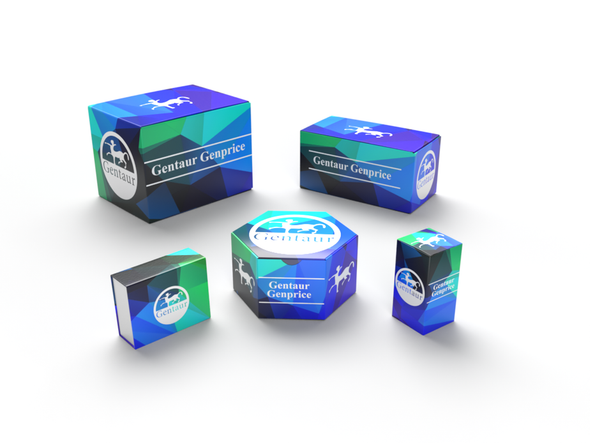Description
Mouse Epha2 Antibody | 57-864 | Gentaur UK, US & Europe Distribution
Host: Rabbit
Reactivity: Mouse
Homology: N/A
Immunogen: This Mouse Epha2 antibody is generated from rabbits immunized with a KLH conjugated synthetic peptide between 296-323 amino acids from the Central region of mouse Epha2.
Research Area: Neuroscience
Tested Application: WB
Application: For WB starting dilution is: 1:1000
Specificiy: N/A
Positive Control 1: N/A
Positive Control 2: N/A
Positive Control 3: N/A
Positive Control 4: N/A
Positive Control 5: N/A
Positive Control 6: N/A
Molecular Weight: 109 kDa
Validation: N/A
Isoform: N/A
Purification: This antibody is purified through a protein A column, followed by peptide affinity purification.
Clonality: Polyclonal
Clone: N/A
Isotype: Rabbit Ig
Conjugate: Unconjugated
Physical State: Liquid
Buffer: Supplied in PBS with 0.09% (W/V) sodium azide.
Concentration: batch dependent
Storage Condition: Store at 4˚C for three months and -20˚C, stable for up to one year. As with all antibodies care should be taken to avoid repeated freeze thaw cycles. Antibodies should not be exposed to prolonged high temperatures.
Alternate Name: Ephrin type-A receptor 2, Epithelial cell kinase, Tyrosine-protein kinase receptor ECK, Tyrosine-protein kinase receptor MPK-5, Tyrosine-protein kinase receptor SEK-2, Epha2, Eck, Myk2, Sek2
User Note: Optimal dilutions for each application to be determined by the researcher.
BACKGROUND: Receptor for members of the ephrin-A family. Binds to ephrin-A1, -A3, -A4 and -A5. Induces apoptosis in a TP53/p53-independent, caspase-8-dependent manner (By similarity) . Plays an important role in angiogenesis and tumor neovascularization. The recruitement of VAV2, VAV3 and PI3-kinase p85 subunit by phosphorylated EPHA2 is critical for EFNA1-induced RAC1 GTPase activation and vascular endothelial cell migration and assembly. May function in distinctive aspects of pattern formation and subsequently in development of several fetal tissues. May be involved in cell-cell interactions guiding early hindbrain development.



![Mouse Epha2 Antibody (Center) [AMM06430G] Mouse Epha2 Antibody (Center) [AMM06430G]](https://cdn11.bigcommerce.com/s-1rdwiq712m/images/stencil/590x590/products/56046/56350/gentaur-genprice__26005.1661610467__29809.1661628092__75433.1661676199__77988.1661684280__64362.1661692443__76654.1661836901.png?c=1)






